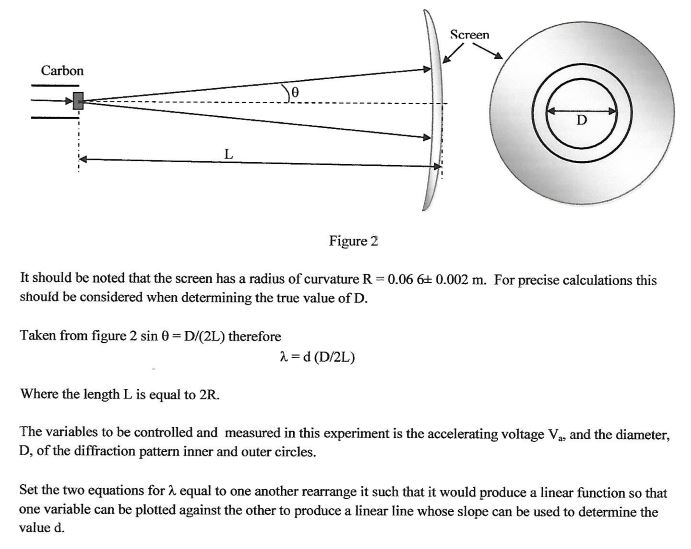
In this case, the wavelength of the incident X-ray is known and measurement is made of the incident angle ( Θ) at which constructive interference occurs.

The general relationship between the wavelength of the incident X-rays, angle of incidence and spacing between the crystal lattice planes of atoms is known as Bragg's Law, expressed as: Each rational plane of atoms in a crystal will undergo refraction at a single, unique angle (for X-rays of a fixed wavelength). Where the travel path length difference between the ray paths ABC and A'B'C' is an integer multiple of the wavelength, constructive interference will occur for a combination of that specific wavelength, crystal lattice planar spacing and angle of incidence ( Θ). To illustrate this feature, consider a crystal with crystal lattice planar distances d (right). The diffracted X-rays exhibit constructive interference when the distance between paths ABC and A'B'C' differs by an integer number of wavelengths ( λ). Common output devices include strip-chart recorders, printers, and computer monitors.Figure 1. The signals from the detector are filtered by pulse-height analysis, scaled to measurable proportions, and sent to a linear ratemeter for conversion into a continuous current. Radiation is directed into the detector, and the Kß radiation, because it is diffracted at a slightly different angle, is directed away. When positioned properly just in front of the detector, only the K The detector and specimen holder are mechanically coupled with a goniometer so that a rotation of the detector through 2x degrees occurs in conjunction with the rotation of the specimen through x degrees, a fixed 2:1 ratio.Ī curved-crystal monochromator containing a graphite crystal is normally used to ensure that the detected radiation is monochromatic. Divergent slits, located between the X-ray source and the specimen, and divergent slits, located between the specimen and the detector, limit scattered (non-diffracted) radiation, reduce background noise, and collimate the radiation. The basic geometry of an X-ray diffractometer involves a source of monochromatic radiation and an X-ray detector situated on the circumference of a graduated circle centered on the powder specimen. Because each crystalline material has a characteristic atomic structure, it will diffract X-rays in a unique characteristic pattern. The relation by which diffraction occurs is known as the Bragg law or equation. Under this condition the reflections combine to form new enhanced wave fronts that mutually reinforce each other (constructive interference). If an incident X-ray beam encounters a crystal lattice, general scattering occurs.Īlthough most scattering interferes with itself and is eliminated (destructive interference), diffraction occurs when scattering in a certain direction is in phase with scattered rays from other atomic planes. (K 1) at a wavelength of about 1.5 angstroms, are commonly used for geological applications. Tubes with copper targets, which produce their strongest characteristic radiation X-rays are produced at the point of impact, and radiate in all directions. In an X-ray tube, the high voltage maintained across the electrodes draws electrons toward a metal target (the anode).

Produced when electrically charged particles of sufficient energy are decelerated.

X-rays are electromagnetic radiation similar to light, but with a much shorter wavelength.


 0 kommentar(er)
0 kommentar(er)
